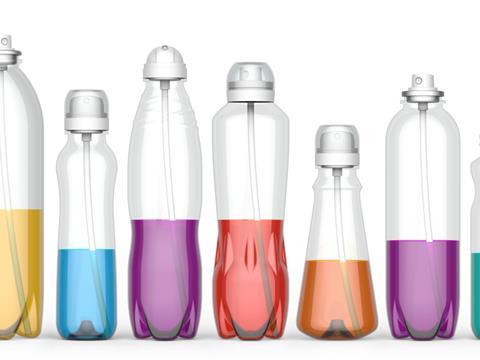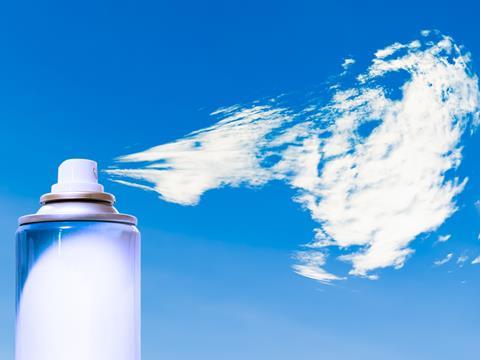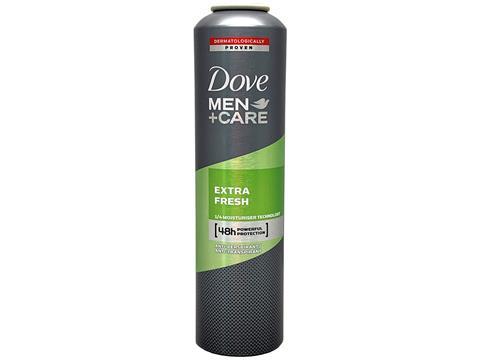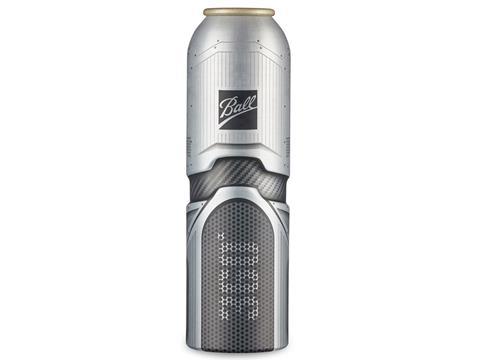
In our latest issue, we give an overview of some of the key questions and topics currently affecting the aerosols & sprays sector. Victoria Hattersley reports.
Plastic aerosols on the rise
When the average consumer thinks of aerosol cans, they probably think of aluminium or steel – and it’s definitely the case that metals still make up the largest percentage of overall production. We’re all pretty well-versed by now in the environmental benefits of metals. They are permanent materials that can be infinitely recycled without any loss of quality. Empty aerosols can then be safely recycled alongside other metal packaging. Simple, yes?
But it’s also the case that an increasing number of aerosols today are made from plastics, and this percentage is expected to rise. It’s also worth bearing in mind that while metal is certainly endlessly recyclable the actual carbon footprint needed to produce it is higher than plastics – something that should be taken into account when we are looking at overall life cycle analysis.
“Plastic aerosols are becoming increasingly popular for several reasons,” says Nadine DeBauche, business development manager, Strategic Initiatives, Graham Packaging. “They will not rust on the bottom like metal spray cans and they are warmer to the touch. When exposed to high heat, pressurised metal aerosols can also be hazardous if not vented properly.”
According to Ms DeBauche, plastics can also allow for greater flexibility in design, which helps to address the demand for more portable products. “As the population ages, consumers are looking for products that have more ergonomic appeal and are easier to use. Our plastic aerosol solution allows us to produce container shapes that provide better ergonomics and more attractive designs than is possible with metal. Our new champagne-base, single-piece bottle has garnered a significant amount of shelf appeal. This container has also been beneficial from a cost perspective since the manufacturing process is reduced to one piece.”
Building the circular economy
The current Aerosol Dispenser Directive (ADD) was written in 1975, at a time when only brittle plastics were available, meaning they were treated in the same way as coated glass containers. The market has moved on since then, and PET is now an increasingly viable aerosol material. In 2020, an updated ADD could allow plastic aerosols beyond the current 220ml restriction in Europe. This would greatly expand their market reach, so if it comes to pass the amendment would be a significant development for companies such as Graham.
It is owing to this potential growth in the volume of plastic aerosol packages that in 2018 Petcore Europe founded, along with the FEA, the Plastic Aerosol Recycling Special Industry Group (SiG). Its aim is to enhance the value and sustainable growth of the PET value chain in Europe as well as growing the volume of recycled PET.
Among other things, this is a conscious effort on the part of the industry to address one of the biggest challenges of using plastic aerosols – the low recycling rates and the negative perceptions of the material this elicits. In part, according to Petcore, this comes down to a focus on the design of the valve area to avoid any contamination (e.g. metal) to the PET recycling stream. This is an issue that still needs some exploration by the SiG.
Alain D’Haese, Secretary General of FEA, the European Aerosol Federation, highlights that several valve companies are already developing PET valves.
“If we want to be serious about plastic recycling,” he says, “there is a need to establish a constructive dialogue within the PET value chain. The aerosol industry is already well-advanced on the recycling of metal aerosols. Obviously, there is more work to do for the plastic stream because the topic is more recent. I think this is an opportunity to provide a good story on plastics.”

Is the future air-powered?
It’s long been considered common knowledge that aerosols – as in the sprays themselves, rather than the container – can be damaging to the environment. I don’t need to give a history lesson here – the industry’s voluntary move away from CFCs to alternative propellants such as liquid flammable gases in 1989 is well known – but even so, it could be said that many of the propellants in use today are still damaging.
Some have argued that air-powered aerosols, as opposed to the use of liquids, are ‘the future of sustainability’. One such company is Netherlands-based Airopack, which is an innovator in the area of air-powered solutions – indeed, it advocates for a ban on liquid propellants altogether, as well as the use of aerosols in-house.
“Airopack is not really an aerosol at all as it contains no harmful propellants but only pure air,” says Olivier Overweg, executive vice-president, sales, at Airopack. “In fact, I would opt for rephrasing to ‘air-powered pressurised containers’.” In addition to the sustainability benefits, he explains that some of the other advantages of such a solution include: “Transparency of the bottle with less risk of flammability; pressure control device to ensure smooth, uninterrupted flow and giving complete evacuation.”
What are we breathing in?
Aside from environmental concerns, there are also the health implications. As consumers become more aware of the ingredients in their products, they are demanding alternatives to propellants using potentially harmful ingredients.
“We need to show the big picture on both carbon footprint and direct health threats when using packaging materials,” says Mr Overweg. “Not only the packaging material itself but also what happens when you dispense or spray. What is the impact on health when dispensing or spraying?”
No ‘single fit-for-all solution’
One thing we have learned when it comes to packaging is that there is no ‘perfect’ solution – and while the above may make it seem as though air-powered aerosols are the clear choice, it is, alas, not so simple.
“Technically, air is an aerosol propellant like any other,” says Alain D’Haese, Secretary General of FEA. “It will be a compressed gas (like nitrogen or carbon dioxide) not a liquefied gas. However, in some aerosol products it is not yet technically or economically possible to replace the liquefied propellant whilst retaining product performance. Other options also exist to improve products. I do not think there is and will be a single fit-for-all solution to make aerosol dispensers more sustainable.”
In short, while there is great potential for air-powered aerosols this does not mean that we can dispense with more traditional propellants altogether. But the industry is more conscious than ever of the need to mitigate their impact.

Sustainable innovation: Tubex
Unilever’s Dove Men & Care recently received the German Packaging Prize 2019 in the ‘economic efficiency’ category. The can, manufactured by German company Tubex, uses a new patented alloy for slugs – a joint development between Tubex and slug supplier Neuman Aluminium. According to the company, the advantage of this patented slug’s design is that it is ready to use real postconsumer recycled scrap – up to 25 per cent and more which it says is of ‘real significance’.
Another achievement of this new can is the weight reduction – up to 20 per cent less than the previous standard can. Tubex achieved this by reducing the wall thickness and slightly modifying the shape of the shoulder.
But reduction of the wall thickness in turn creates its own problem: it makes the cans more susceptible to dents during packing and transport. To minimise this, Tubex has invested in a new packing technique, layer wide packaging, through which the cans are placed on pallets by robots instead of being packed in bundles.
“The real advantage of this packing is that 15 per cent more cans fit onto the pallet and fifteen per cent more pallets fit onto a truck,” says managing director Leo Werdich. “This also means fifteen per cent less warehouse space / pallets are needed.”

Design spotlight: Ball Packaging
Reaching the consumer through on-shelf differentiation is a constant challenge for brand owners. Add to this the increased consumer demand for sustainable solutions, combined with functionality and personalisation, and it’s clear to see this puts an awful lot of pressure on aerosol manufacturers to come up with ever-more innovative solutions.
One big design story of the past year was Ball Packaging’s 360° can, which pairs graphics expertise with innovative shaping in order to be visually engaging from every angle. “360° brings can design to the next level, as varied shaping is available around the entire circumference of the can,” says Jason Galley, global director Innovations and Business Development. “Artwork oriented to the recessed area complements the shaping and allows for dynamic detail. For brands that embrace a clean and simple aesthetic, this new dimension can add drama without clutter.”
There are also ergonomic benefits. The shaped recessed area can be designed in such a way that it provides easy grip – a feature that is useful for products where slippage can be a usability concern.
What does ‘sustainable’ mean for aerosols?
In the midst of the ongoing climate crisis, the word ‘sustainable’ is used so often that sometimes it can seem to lose all meaning – and it can mean different things to different people, depending on their priorities or which part of the value chain they operate in. We asked our various interviewees what the word means to them within their own segment.
Olivier Overweg, Airopack: It means being as transparent as you can be. Show customers and consumers the real ‘end-to-end’ comparison of the carbon footprint. For instance: what is the comparison of energy needed to recycle aluminium, plastics or metal?
Alain D’Haese, FEA: The concept focuses on meeting the needs of the present without compromising the ability of future generations to meet their needs. Life-Cycle Assessment is the only tool to make relevant environmental assessments, but it is complex and costly, and the results depend on the data which are used and assumptions which are included. Aerosol packaging is only a part of the product impact.
Nadine DeBauche, Graham Packaging: Graham has committed to the New Plastics Economy Global Commitment for all plastic packaging to be reused or recycled by 2025. In addition, we’re currently focused on three primary goals that directly impact our customers: increasing post-consumer resin content in our bottles, improving recyclability in all categories and decreasing our carbon footprint.
Jason Galley, Ball Packaging: Public debate often focuses on the first-time production of aluminium, plastic or other packaging materials. This is outdated, linear economy thinking and neglects, for example, the 95 per cent energy savings that are achieved through the recycling of aluminium. Ball’s development of ReAL®, the world’s first lighter weight aluminium aerosol can, expresses our commitment to innovation and sustainability.
Europe’s aerosol industry: At a glance*
- More than 5.7 billion of the 16 billion units produced globally were made in Europe in 2017 (a new record high, according to reported filings)
- The UK, Germany and France account for more than 60 per cent of annual European aerosol production
- Aerosol containers are primarily made of steel and aluminium, with glass and plastic containers remaining marginal
- Cosmetics and household products represent more than three-quarters of European production (personal care 56.6 per cent, household 20.7 per cent, others 22.7 per cent)
*Taken from the FEA Statistics report 2017











